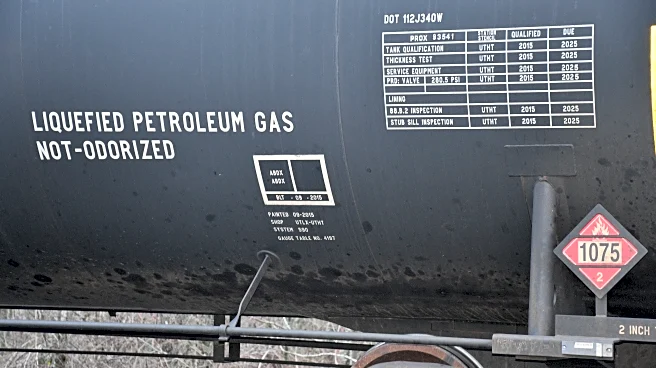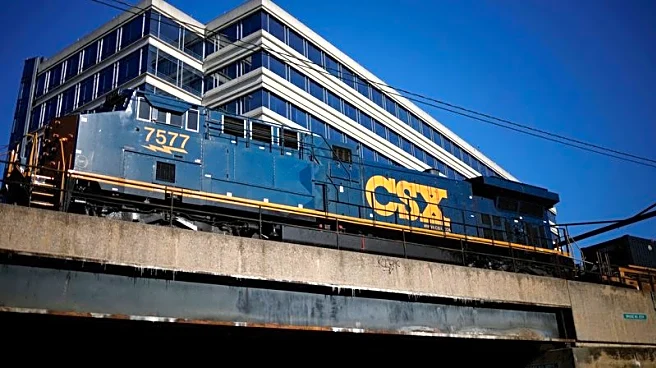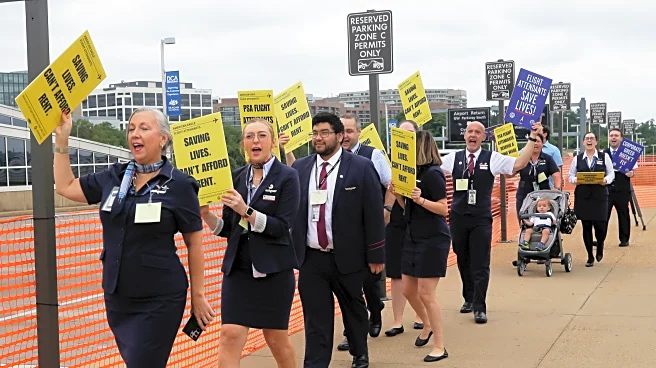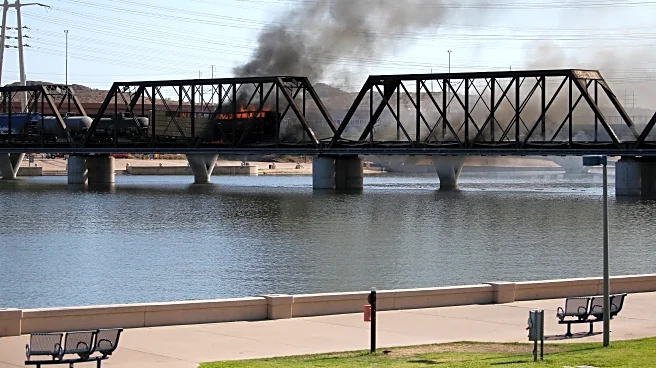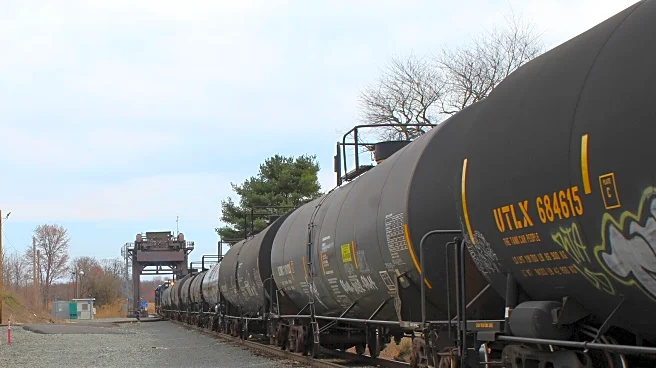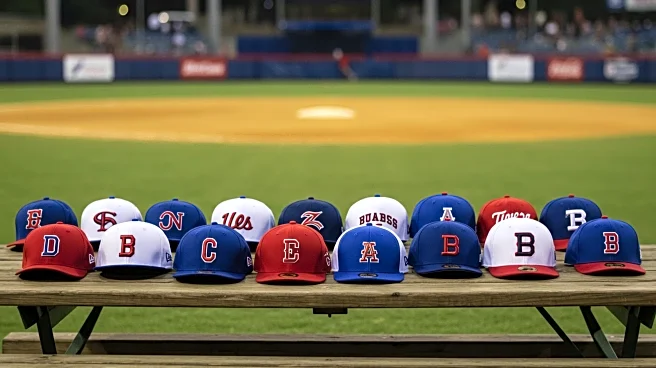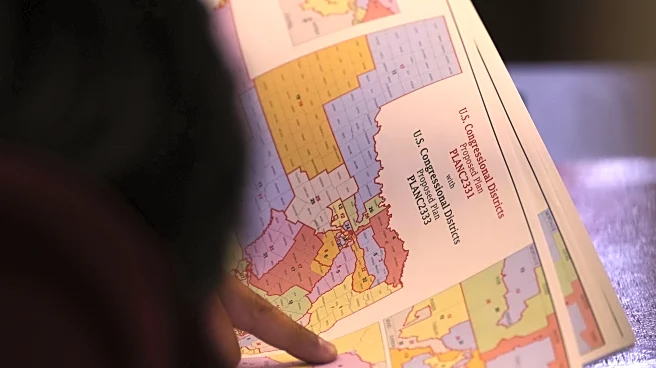Two and a half years after a derailed train spewed toxic gases across eastern Ohio, none of the nation’s largest freight railroads have fulfilled promises to join a voluntary federal close call program designed to reduce rail hazards and prevent accidents.
Two railroads — BNSF and Norfolk Southern — launched partial trials, but haven’t fully joined the program. A federal working group formed to negotiate railroad participation recently disbanded.
Railroads complained that the safety program — which
lets employees report safety issues and close calls without facing discipline — was cumbersome and no better than their own internal processes.
But Amtrak and smaller freight and passenger railroads across the country do participate and studies show the program reduced accidents by approximately 20 percent.
Program advocates say the big “Class I” freight railroads’ reluctance to participate shows the industry failed to learn any lessons from the 38-car derailment in East Palestine, Ohio, in 2023 that engulfed 35 cars in flames and forced the evacuation of homes in a 1-mile radius.
“We had an opportunity as a group to make things better and make things safer, and we didn’t do it,” said Jim Mathews, president and CEO of the advocacy organization the Rail Passengers Association. He served on the disbanded working group.
“Think about how much better and how much safer it could be if we could add all of those 120,000 employees into the mix and all of those operations of hundreds and hundreds of trains a day all across the country,” Mathews said.
The federal initiative known as the Confidential Close Call Reporting System, or C³RS, was initially inspired by a similar program in aviation started in 1976 that has helped make flying the safest form of travel in the United States.
Federal transportation agencies argue the rail program could similarly improve safety for passengers, workers and the more than 12,000 communities that can have dangerous chemicals passing through their backyards on freight trains every day.
For the last decade, more than 1,000 trains have derailed every year in the United States, and one accident a day, on average, surpasses $100,000 in damages, according to the U.S. Department of Transportation.
For years, the National Transportation Safety Board, or the NTSB, has said railroads need a program that allows employees to report mistakes or close calls without facing discipline, arguing similar programs save lives in other industries.
The NTSB said in investigation reports that a program like C³RS could have prevented accidents in Bridgeport and West Haven, Connecticut, in 2013, and in Chester, Pennsylvania in 2016 that in total killed three people and injured more than 100.
The deadly passenger train crash nine years ago in Chester, Pennsylvania, illustrates how.
On April 3, 2016, an Amtrak train barreled down a track near Chester, Pennsylvania, at an authorized speed of over 100 mph. By the time the train engineer saw workers and equipment on the track and engaged the emergency brake, it was too late. The train hit a backhoe with a worker inside at 99 miles per hour. That worker and the track supervisor, who was hit by debris, were killed and 39 other people were injured.
Amtrak had joined C³RS, but in the midst of contentious contract negotiations and a strict new Amtrak zero-tolerance safety policy, rail unions had temporarily opted out of the close call program and a separate peer-to-peer safety feedback program.
The NTSB investigation of the accident revealed more than two dozen unsafe conditions, “many involving safety rule violations and risky behaviors by workers” across several levels of Amtrak’s organization, including track maintenance workers and dispatchers and management. The NTSB observed “an inconsistent vision of safety throughout the organization, hostile attitudes between labor and management about no-tolerance rule violations, and ill-equipped work crews.”
Through C³RS, workers can file reports of minor rule violations, mistakes, close calls and malfunctioning equipment with NASA, the aeronautics and space agency that runs the program for the railroad administration. As long as those reports meet several requirements, like no one was hurt, no hazardous materials were released, or the employee didn’t wilfully break the law like drinking on the job, then the employee receives protection from disciplinary action if they broke procedure.
“We know that our employees make mistakes. They work hard to prevent those mistakes, but they do happen,” Leslie Radanovich said in an interview with the Howard Center.
Radanovich manages system safety at Metrolink, a passenger railroad in Southern California that joined C³RS in 2023. A Metrolink spokesperson said employees have made more than 300 C³RS reports so far and Radanovich said the program has gotten more popular over time.
“I really think that C³RS allows us to see the whole picture and I think any organization could probably benefit from that,” she said.
All six Class I freight railroads committed to joining the federal program in 2023 after the toxic derailment in East Palestine, Ohio. However, they outlined several areas in which they argued C³RS needed to be improved or changed, arguing C³RS is inefficient and slow, less effective than their own internal programs and the program could allow employees to take advantage of the system and become so-called “repeat offenders.”
The FRA formed a working group of railroad, labor and federal officials to hash out those details, but after two years discussions stalled and the FRA ended the group. An email sent to working group members in March said the group had “reached an impasse” and “further meetings will not likely produce meaningful results.”
Mathews said the Class I freight railroads incorrectly assume a punitive approach to safety gets the best results.
“They are absolutely convinced that the key to a safe railroad is to punish employees first,” Mathews said. “And we know, not just from the short lines and from Amtrak and from the commuter railroads but from half a century of aviation data, that that’s not the right answer.”
Vince Verna, a former railroad engineer and a national legislative representative for the Brotherhood of Locomotive Engineers and Trainmen, one of the largest rail unions, said he heard a common refrain from the biggest freight railroads while serving on the C³RS working group. He said railroad representatives and lobbyists call C³RS a “get-out-of-jail-free” program for employees.
“It’s not a ‘get-out-of-jail-free’ program, it’s a don’t-shoot-the-messenger program,” he said.
Formal studies have found C³RS to be effective in various ways.
A 2022 Government Accountability Office study, for instance, interviewed participating railroads and found C³RS improved safety culture and trust between labor and management and identified previously unknown safety issues.
A 2024 Volpe National Transportation Systems Center report highlighted specific safety reforms that came out of the program. One railroad, for instance, developed a new form of training in which employees act out scenarios from C³RS reports and get feedback on their actions from training instructors and experienced employees. Other railroads have since adopted this training.
FRA analysis published in 2024 shows that participating railroads have seen an approximate 20 percent reduction in total train accidents or incidents per million train miles since participating in the close call program, compared with a 3 percent reduction over the same period for non-participating railroads. And in several early pilot programs, derailments were reduced by as much as 40 percent.
Every Class I railroad declined requests for interviews with the Howard Center about C³RS.
Scott Bunten, a Brotherhood of Locomotive Engineers and Trainmen general chairman, helps coordinate a trial program with Norfolk Southern. He said it would work better if all rail workers were included.
“If we could get all the (workers) involved in it, maybe we could avoid an East Palestine in the future,” Bunten said.
“We go through a lot of people’s backyards on the railroad. I think the general public doesn’t know it, but they have a huge stake in C³RS as well,” he added.
___
Haley Parsley of the Howard Center for Investigative Journalism at the University of Maryland contributed additional reporting for this story.
___
The Howard Center for Investigative Journalism at the University of Maryland is funded by a grant from the Scripps Howard Foundation in honor of newspaper pioneer Roy W. Howard.


